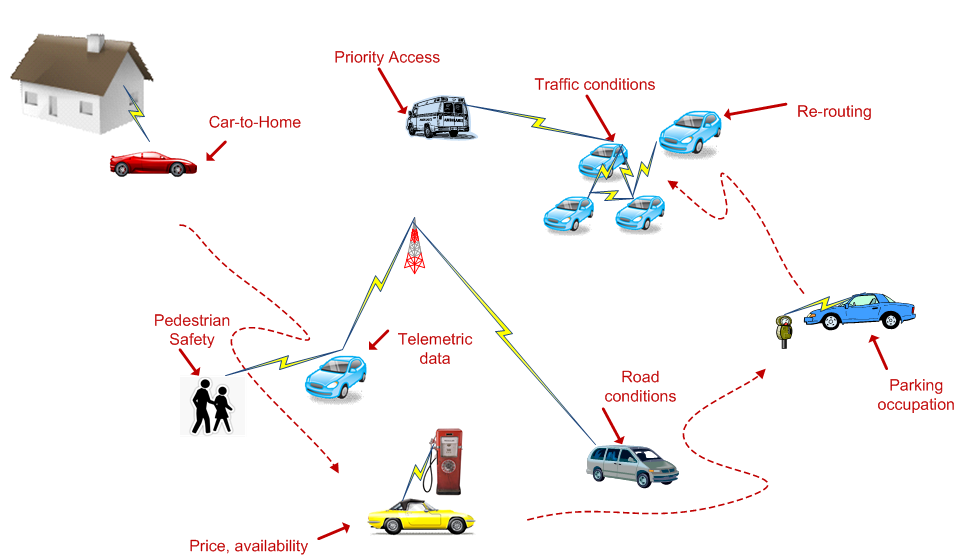Intelligent Transportation Systems
We see today urban traffic growing faster than the capacity of road infrastructures and posing a challenge to traffic safety and to the sustainability of our mobility. In this context, cooperative mobility strategies are expected to become a key enabler for a better usage of the available road infrastructures. Considering the estimation by the American Automotive Association of the yearly cost of traffic safety to 160 billion USD, or the yearly cost of traffic congestion to 50 billion EUR by the European Commission, local road authorities are facing a strategic challenge to develop wireless vehicular communication solutions and to propose cooperative ITS applications to the public.
In that context, typical cooperative ITS solutions expected from wireless vehicular communication span from enhancing the safety of the drivers, but also pedestrian and other vulnerable road users, to providing advanced warning about road conditions and congestions, and offering cooperative advanced navigation solutions to improve road usage, or to informing drivers about available parking places or gasoline price. The key aspect is therefore information and to develop smart and efficient communication systems to transmit and share information between road users and with road operators, yet taking into account various and multiple application requirements from the vehicular automotive industry.
Research Problems
Our past and current research problems are related to the following aspects:
-
Traffic Safety
- Wireless channel congestion control/management through smart transmit power, rate, or PHY/MAC parameter adaptation
- Traffic context modeling and multi-application awareness management
- Geographic broadcasting schemes
- Antenna and interference modeling, and their impact on traffic safety applications
-
Multi-modal Transportation - Beyond Car-Following-Models
- Socially-driven trip OD matrices and socially-driven path and navigation
- Mobility prediction and vehicular tracking
- Calibration of large-scale mobility scenarios
- Pedestrian, public (tram, bus), motorcycle, electric vehicle mobility modeling
-
Traffic Efficiency and Low Carbon Footprint
- Design of cooperative low-pollution navigation, traffic light and contextual speed adaption strategies
- Performance of cooperative adaptive cruise control (CACC) on unreliable communication links
- Heterogeneous infrastructure deployment solutions (IEEE 802.11p RSU, LTE/LTE-A (femto) e-Nb)
- Optimal access technology selection strategies (IEEE 802.11p, 3G, LTE-A, DVB-H), including smart media-independent handover mechanisms
-
Electro-Mobility and the Fully Electric Vehicle
- Cooperative energy-saving navigation
- Smart charging station deployment and dimensioning
- IPv6 based mobility management
-
Evaluation Tools and Methodologies
- Large-scale simulation platform with iTETRIS
- Large-scale emulation platform with OpenAirInterfance
- Field Operation Test
-
Standardization Effort
- CAR 2 CAR Communication Consortium
- ETSI TC ITS
Tools
- Markov Theory
- Baysian Networks
- Monte Carlo Models
- Genetic Algorithms
- Flow Theory
- Graph Theory


